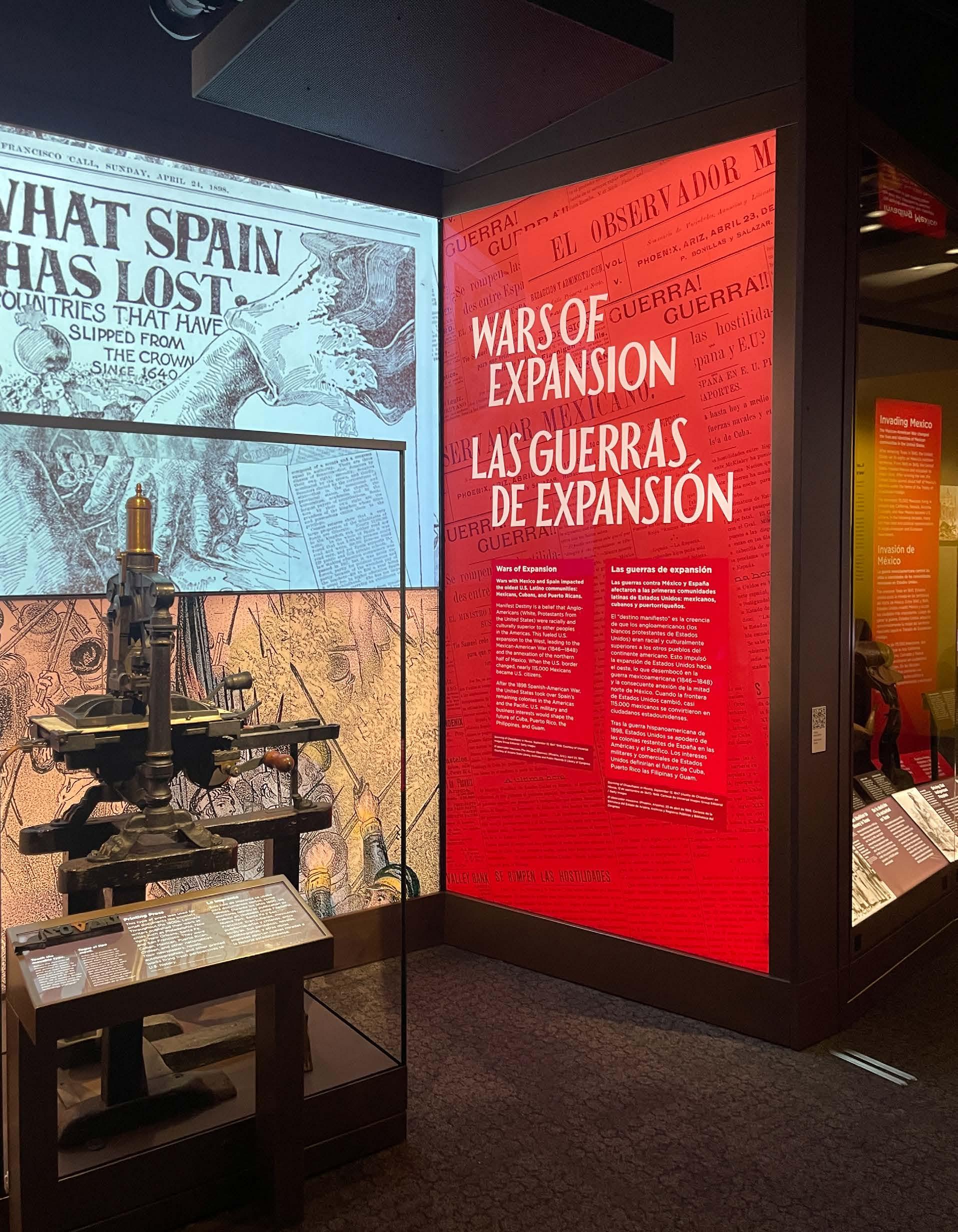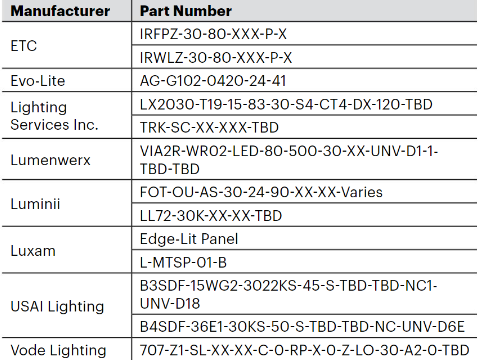
6 minute read
Flexibility and Precision
How Available Light Brought the Molina Family Latino Museum to Life
By Randy Reid
Photo credit: Derek Barnwell
The Molina Family Latino Gallery, part of the Smithsonian National Museum of American History, is a prime example of how thoughtful lighting design can enhance culturally significant collections. This project, designed by Available Light, showcases the intersection of creativity and technical precision.
In crafting this article, I had the privilege of interviewing both Steven Rosen, President and Creative Director of Available Light, and Derek Barnwell, Managing Principal. My conversation with Steven set the tone, highlighting the project's broader vision, while Derek provided the intricate details behind the lighting design’s technical execution.

The gallery’s design emphasizes accessibility and inclusivity. Features include clear circulation paths, tactile markers, cane-detectable edges, and accessible furniture. QR codes provide visual descriptions and audio content for exhibits, ensuring an immersive experience for all visitors. Additionally, tactile keypads, open captions for media, and assistive listening devices are integrated to create a universally engaging environment.
A Collaborative Vision
Rosen was the first to introduce the broader narrative of the project. His enthusiasm for the design process was clear as he walked me through images that framed the context for this article. His excitement illustrated how the lighting design played a key role in storytelling.
Barnwell provided a detailed explanation of how they brought Exhibit Designer Mariano Desmaras' vision to life. Desmaras, from Museum Environments, had a well-defined concept for how visitors should engage with the artifacts. It was the lighting team’s goal to ensure this vision came to life without a myriad of objects muddying the story. “We were tasked with making sure the vast collection of artifacts was presented in a way that felt accessible to visitors without overwhelming them,” Barnwell explained.

Challenges and Solutions
Both Rosen and Barnwell emphasized the importance of striking a balance between highlighting the cultural significance of the artifacts while ensuring visitors weren’t overloaded by the sheer volume of display.
Barnwell, who was heavily involved in all things artistic and technical, described how they collaborated closely with the Smithsonian Institution to develop lighting specifications. “We regularly work with the Smithsonian to maintain lighting system continuity across their galleries whenever possible,” he shared. This partnership ensured that the lighting design enhanced the gallery’s aesthetic and met the strict conservation requirements for the artifacts.
One of the key challenges was ensuring flexibility in the system. “The lighting system was designed to easily allow lighting focus touchups as new artifacts or paintings arrived,” Barnwell explained. This adaptability was essential in maintaining the gallery’s relevance for future exhibits.

Technical Details and Lighting Precision
To maintain a consistent atmosphere, a 3000K color temperature was used throughout the exhibit. This warm and inviting environment was particularly suited to the artifacts, providing visitors a calm and focused space. Because the gallery is windowless, the lighting team could completely control the environment, free from the deteriorating effects of daylight.
The system, powered by a DMX controls backbone, allowed for granular control over lighting levels. “The preset system allowed us to record light levels as specific scenes, which automatically play back daily via scheduling software,” Barnwell explained. This system created a consistent visual experience for visitors while enabling easy management by the museum staff.
The artifact cases were another area where the lighting team showcased their technical expertise. Barnwell described how Luxam L-MTSP track fixtures were used within the cases, “The variable zoom of these fixtures helped us focus light on discreet objects within densely populated cases.” The Luxam barndoor option and integral dimmers were also employed to both sculpt the light and meet strict lighting level conservation standards, ensuring that every artifact was presented to its full potential.

Flexibility in Design
A major takeaway from the project was the importance of flexibility in the project design. “The lighting fixtures, particularly the spot/wash and framing projectors, are affixed to a Unistrut grid,” Barnwell noted. This system allows for easy adjustments when new exhibits are introduced, making it possible for lighting focus to modulate without requiring a full redesign effort. "We designed the artifact cases with the same goal in mind," he added, reinforcing the importance of adaptability to future-proof the space.
This flexibility was crucial for the museum. The system allows new artifacts and exhibits to be displayed seamlessly without needing costly reworks or major changes to the infrastructure.

Commissioning and Execution
Barnwell and Project Designer Nastassia Ortiz were hands-on during the programming, focusing, and commissioning of the lighting system. “We always specify a lighting integrator to both maintain the integrity of the design and protect the client,” he shared. The integrator handled much of the technical work, but Barnwell admitted to climbing ladders himself during commissioning to make final adjustments. “We worked with the architect, exhibit designer, and the museum leadership to ensure that the lighting levels were set exactly as prescribed by the conservators,” he said.
Lighting control was also a critical component, particularly in the artifact cases. Under the supervision of the SI Conservator, the lighting team ensured that each case met strict conservation guidelines while still achieving the desired visual impact. “The light levels in the artifact cases were set locally, with each fixture carefully adjusted under the Conservator’s watch,” Barnwell recalled.
Completion Through Adversity
Despite the challenges of the COVID-19 pandemic, the project was completed on time. “We began initial design meetings in 2018 and managed to finish the focus by June 2022,” Barnwell said, reflecting on the resilience of the team.
Thanks to this determination, the Molina Family Latino Museum now offers a visually stunning experience. The lighting design plays a crucial role in this gallery, guiding visitors through the rich history of Latino culture with a delicate balance of technical precision and creative flair.
Project Participants
Steven Rosen - Creative Director
Derek Barnwell - Lead Designer/Project Manager
Nastassia Ortiz - Project Designer
Client - Quinn Evans Architects
Exhibit Designer - Mariano Desmaras, Museum Environments
Fixture Schedule



